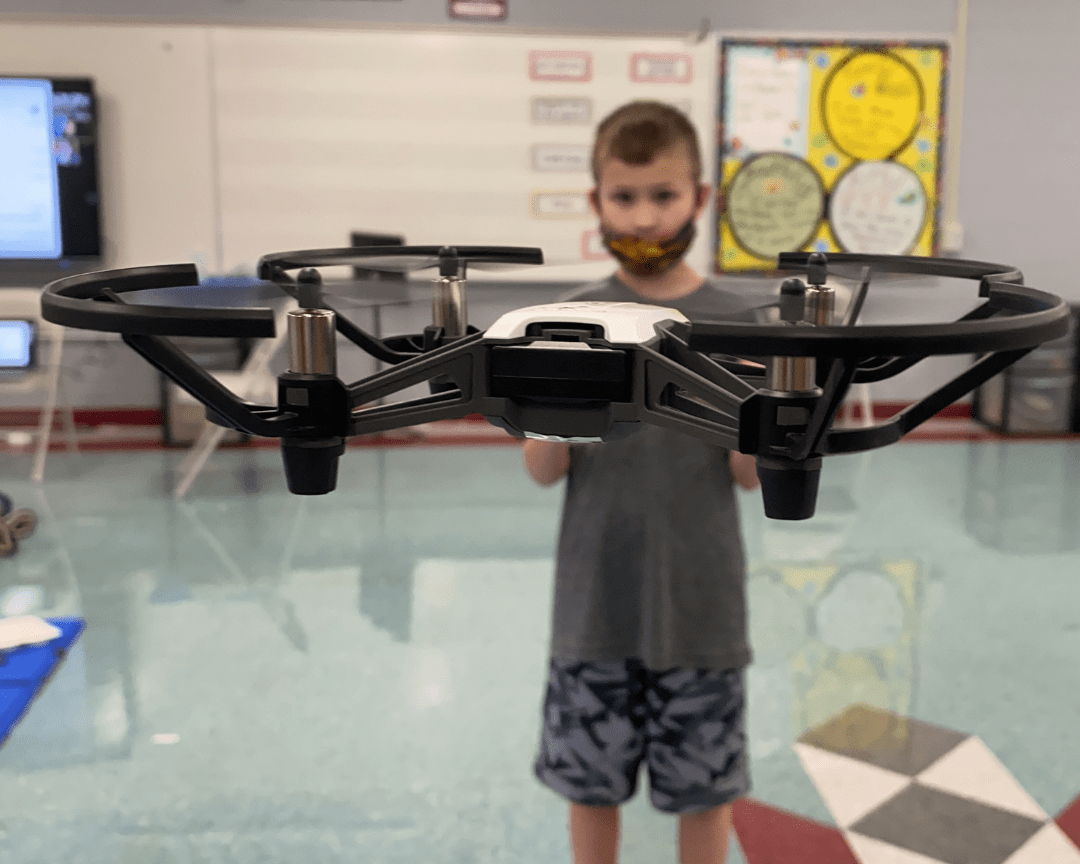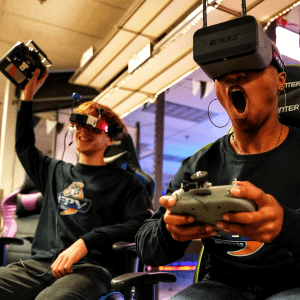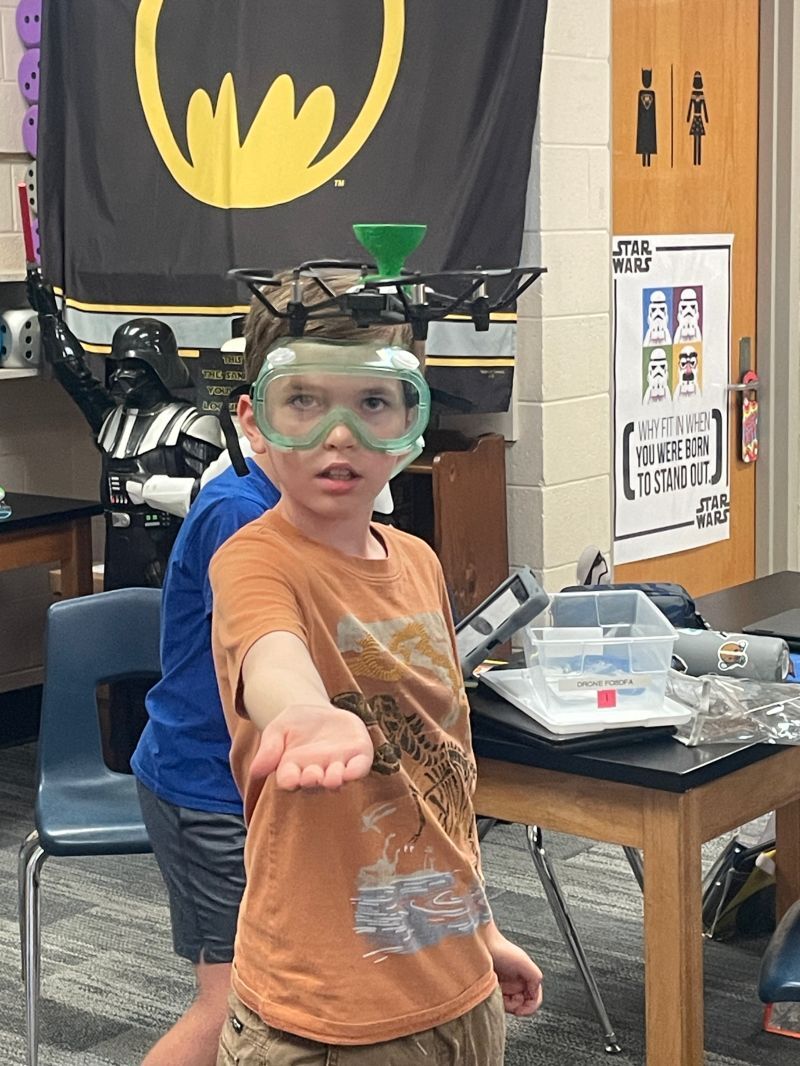When using drones in early education, kids have the chance to explore their world through new eyes. Drones are one of the most engaging (and fun!) ways to fuel the interest in STEM in the classroom. But even if teachers know this, starting a drone curriculum program – and even finding drones for kids – can be a challenge.
So, what specific types of drones should you look for when teaching kids? There are a few things to consider: features, product reviews, education level, and more. Here’s what you need to know.
Best Features of Drones for Kids
Depending on the age group of your students, you can find drones that serve as basic educational toys or opt for more advanced drones designed for ages 13+. Whichever classroom you’re leading, here are some top features to look for.
Must-Have Drone Features
First thing’s first. What overall features do kid drones absolutely need?
- Easy to Fly: Especially for elementary school children, finding drones that are easy to fly is a must. Look for auto-hover or headless mode (navigation response no matter which direction the front of the drone is facing).
- Lightweight: To fly a drone outdoors, make sure it’s under 0.55 pounds– otherwise, you need a drone pilot’s license.
- Portable, Compact Design: You don’t want a bunch of drones that are big, bulky, or difficult to carry.
- Replaceable Propellers: Crashes happen. Things break. Replacing the propellers is inevitable, so find a drone brand that makes it easy.
“Nice to Have” Features for Drones With Kids
Beyond the basics, here’s what features make drones even more fun and educational.
- Programmable Drones: Program features are ideal for kids learning computing or coding: customize or automate drone flight, trajectory, and response.
- Smartphone Apps: Some drones come with smartphone apps where kids can command special tricks or even view real-time video during flight.
- Foldable: Drones that fold or collapse when not in use make storage and portability easy.
- Altitude Hold: Also called “auto hover”, this feature makes a drone stay at a designated height on its own, so kids can practice direction and speed switching without major crash landings. It also stabilizes the drone for photos/videos.
- Build-Your-Own Drones: Want to really teach kids how drones work? Let them build their own using educational drone kits.
Note: Drones that weigh more than 0.55 pounds or 250 grams need to be registered with the Federal Aviation Administration (FAA). And unless you’re flying a drone for recreational purposes only, you may need a drone license. When flying drones with kids for education, look for lightweight, small-sized drones that don’t require registration or licensing.
Best Kid’s Drone
What drone is best for kids? It depends on the purpose of the drone and the age of the drone pilot-in-training.
You want a drone that’s entertaining and versatile enough for kids to stay engaged, but not so advanced that kids can’t fly it. There are quadcopters, UFO drones, and more– some equipped with cameras, gauges, measuring devices, and other educational perks.
To get started with basic drone lessons in STEM, look for good battery life (especially when sharing among groups), durability, ease of use, and customizable flight settings.
Kid Drone Reviews
Ready for real examples of kid-friendly drones? Here are some reviews of the most popular models for students ages six and up.
Ryze Tello Mini Drone
The Ryze Tello Mini drone is easy to maneuver and extremely lightweight (80 grams). Its best-known feature is its image processing capabilities, with a camera capturing HD 720p videos and photos.
Visual learners get the most out of Tello mini, being able to observe what the drone “sees” during flight. Also capable of cool flips and tricks, the Tello mini entertains and educates all at once.
There’s also a programming option with the Scratch system compatibility. This is ideal for STEM education and introduction to coding with drones.
Other drone features:
- Camera for photo and video footage
- Programmable
- Smartphone compatible
- Hover options
- Replaceable propellers (extra set included)
- 13-minute flying time
Potensic A20 Pocket Drone
An affordable pocket drone for kids, the Potensic A20 is ideal for beginners. It’s extra durable and offers safeguards to prevent propeller injuries. This mini quadcopter weighs 190 grams.
This drone is small and safe enough to fly in a classroom, or you can fly it outdoors on a clear, calm day. The remote control is a straightforward design and offers an emergency stop button.
Other drone features:
- Auto hover/altitude lock
- Headless mode
- One-button takeoff and landing
- 3 adjustable speed control settings
- 3 batteries included + USB charging cord
- 15-18 minutes of flying time
Holy Stone Mini Drone
This top-selling, remote-controlled drone for beginners. Costing under $45, it’s one of the most lightweight drone toys for kids weighing only 44 grams. It’s full of fun tricks and shortcuts kids want, whether outdoors or indoors.
This drone is a great introduction for kids who aren’t super tech-savvy. Another perk: when you let go of the remote control toggles in auto-mode, the drone stops moving and hovers. Before learning how to safely crash or land a drone, kids can use this feature to get used to the navigation.
Other drone features:
- Circle flying
- Auto hover and auto-rotation
- Speed adjustable settings
- 3D flips
- Headless mode
- Toss to launch
- Protected propellers (replaceable from manufacturer website)
- 21 minutes of flying time (about 7 minutes per battery)
Parrot Maclane Mini Drone
The Parrot indoor/outdoor mini drone has a sleek, robot-like head with an embedded camera and two headlights with adjustable flash. It’s shock-resistant, giving kids a smooth and fun experience for commanding tricks and flips during flight.
While not a common option for the daily classroom, this nighttime drone gives summer camps or evening STEM programs a chance to inspire kids with drones in a whole new light.
Other drone features:
- Freefall mode
- Easy one-button trick commands
- Top choice for night flight
- Lights and ultrasound readers
- Smartphone compatible
- 9-minute battery life
DJI Mini SE Drone
For older kids (13+), the DJI Mini SE is a more sophisticated drone with less of a “toy” feel. It’s one of the more costly drones and isn’t as durable as many other kids’ drones, but ideal for students who want to take on more responsibility and learning.
Weighing just under the FAA limit at 242 grams, this is a compact drone that functions similar to professional drones. It takes stunning videos and allows creative edit templates for kids or teens engaged in viewing or measuring projects.
Other drone features:
- Excellent camera with 2.7K HD videos
- 3-axis gimbal for stable, smooth footage
- Wind resistance settings
- Intelligent flight battery
- Replaceable propellers (extra set included)
- 30-minute flying time
Drones for Kids in the Classroom
Getting started with drones for kids in the classroom doesn’t have to be hard. Knowing which features you need is the first step to setting up an amazing drone learning experience for your students. If you’re ready to bring the magic of drones to your education program, contact Drone Legends. With a love of drones, we’re helping teachers just like you make legends every day.




